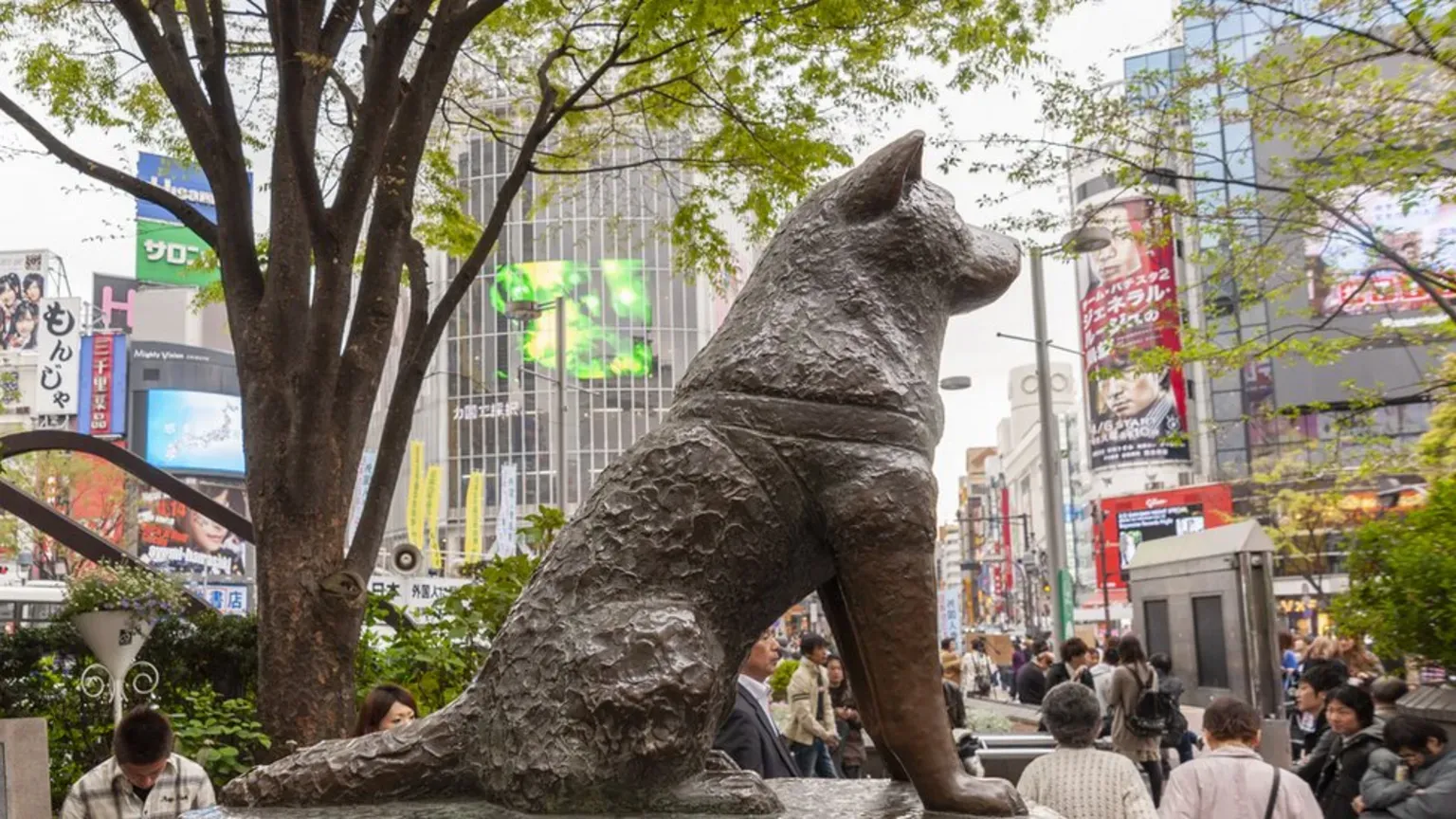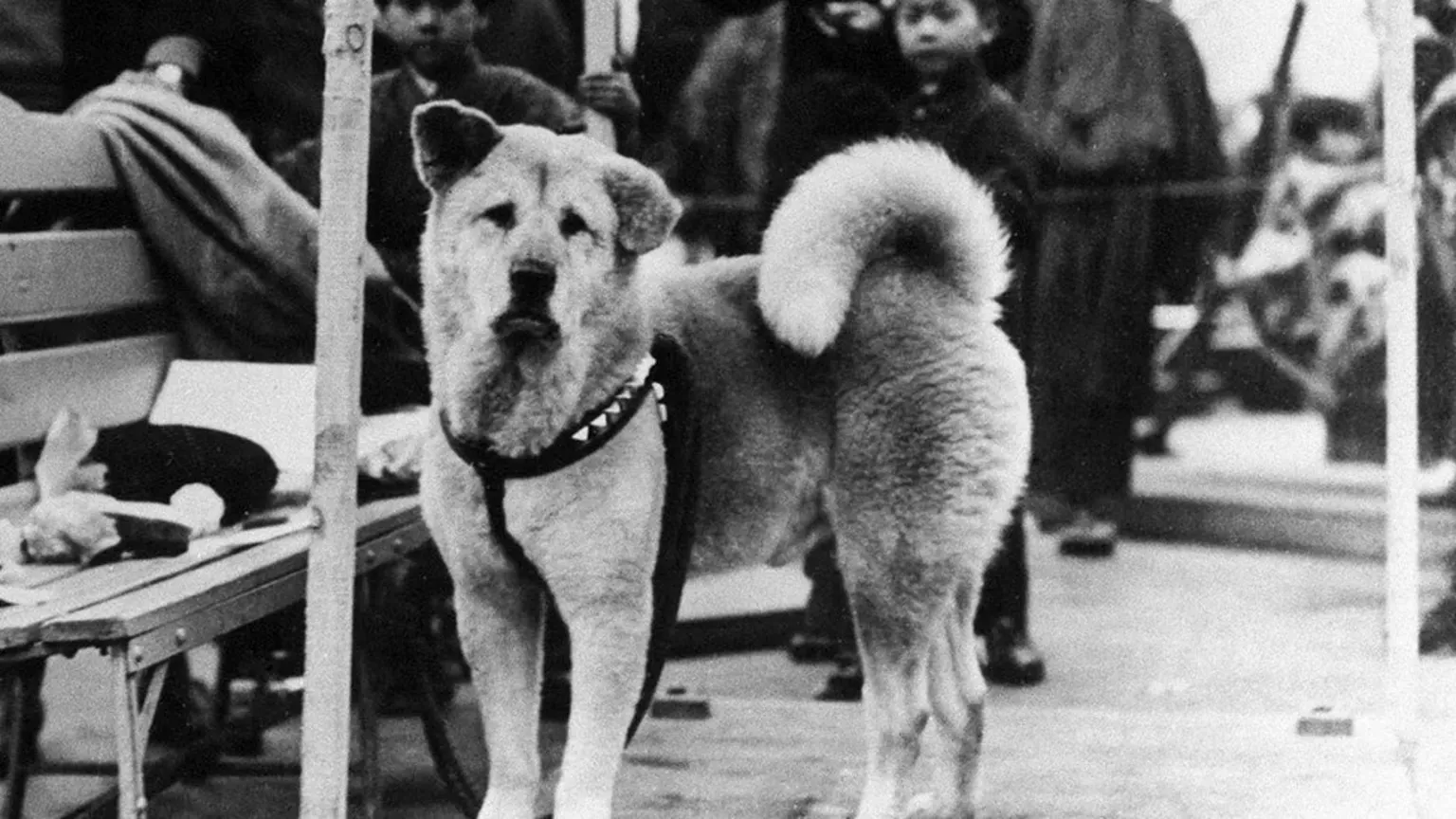The tale of Hachiko, the faithful Akita Inu who waited for his master long after his passing, transcends borders and generations, solidifying its place as the ultimate loyal dog story. Originating in Japan, this heartwarming and poignant narrative has touched millions globally, inspiring books, films, and monuments that stand as testaments to unconditional love and unwavering fidelity. As we delve into the remarkable life of Hachiko, we uncover a story that continues to resonate, reminding us of the profound bond shared between humans and their canine companions. For those who appreciate best dog story movies, Hachiko’s journey is a timeless classic.
The Legend of Hachiko: A Century of Unmatched Fidelity
Born 100 years ago, Hachiko’s enduring legacy is celebrated worldwide. His story has been adapted into numerous forms, including the renowned Japanese film in 1987, the 2009 Hollywood hit starring Richard Gere, and even a Chinese iteration that has captivated audiences at the box office. While other devoted hounds, such as Greyfriars Bobby, have captured hearts, none have achieved the global impact and recognition of Hachiko. His unwavering devotion has become a cultural touchstone, symbolizing loyalty and perseverance.
Since 1948, a bronze statue of Hachiko has stood proudly outside Shibuya Station in Tokyo, where he famously waited for a decade. This iconic landmark, a symbol of hope and steadfastness, was initially erected in 1934 before being repurposed during World War Two. Japanese schoolchildren are taught the story of Chuken Hachiko, or loyal dog Hachiko, as a paramount example of devotion and fidelity, emphasizing virtues cherished within Japanese society. Professor Christine Yano of the University of Hawaii notes that Hachiko represents the “ideal Japanese citizen” with his “unquestioning devotion” – loyal, reliable, obedient, and understanding, without relying purely on rationality.
 A bronze statue of Hachiko stands prominently outside Shibuya station in Tokyo, a popular landmark.
A bronze statue of Hachiko stands prominently outside Shibuya station in Tokyo, a popular landmark.
Hachiko’s Early Life and Bond with Professor Ueno
Hachiko’s incredible loyal dog story began in November 1923, in the city of Odate, Akita prefecture – the native home of the Akita breed. A large-sized Japanese dog, the Akita is one of Japan’s oldest and most revered breeds, designated as a national icon in 1931. Historically, Akitas were trained for hunting animals such as wild boar and elk. Eietsu Sakuraba, author of an English-language children’s book about Hachiko, describes Akitas as “calm, sincere, intelligent, and brave [and] obedient to their masters,” while also possessing a “stubborn personality” and a wariness of anyone other than their master. This inherent loyalty set the stage for Hachiko’s legendary devotion.
In the year Hachiko was born, Hidesaburo Ueno, a distinguished agricultural professor and passionate dog lover, sought an Akita puppy. Following an arduous train journey, the young puppy arrived at the Ueno residence in Shibuya on January 15, 1924. Initially thought to be dead, Hachiko’s biographer, Professor Mayumi Itoh, recounts how Professor Ueno and his wife, Yae, diligently nursed him back to health over the next six months. Ueno affectionately named him Hachi, meaning “eight” in Japanese, with “Ko” being an honorific added by Ueno’s students, signifying respect and endearment. Hachiko quickly became an integral part of their family, forming a deep and unbreakable bond with the professor. Many know this part of the akita dog movie with richard gere.
Professor Ueno’s daily routine involved commuting to work by train several times a week. Each day, he would be accompanied to Shibuya Station by his three dogs, including Hachiko. The loyal trio would then patiently wait at the station for his return in the evening, a familiar and comforting sight for commuters. This routine forged a profound connection between Hachiko and his master, establishing the foundation for the extraordinary acts of loyalty that would define his life.
 A historical black and white photograph of Hachiko, the Akita dog, captured in the 1930s.
A historical black and white photograph of Hachiko, the Akita dog, captured in the 1930s.
The Decade-Long Vigil at Shibuya Station
Tragically, on May 21, 1925, Professor Ueno, at the age of 53, suffered a cerebral hemorrhage and passed away. Hachiko had only been with him for a mere 16 months, but their bond was profound. Professor Itoh recounts the heartbreaking scene: “While people were attending the wake, Hachi smelled Dr Ueno from the house and went inside the living room. He crawled under the coffin and refused to move.” This immediate and visceral reaction underscored the depth of his grief and attachment.
Following Ueno’s death, Hachiko spent several months residing with different families outside Shibuya. However, by the summer of 1925, he found his way to Ueno’s former gardener, Kikusaburo Kobayashi. Having returned to the very neighborhood where his beloved master once lived, Hachiko soon resumed his daily pilgrimage to Shibuya Station, come rain or shine. In the evenings, he would stand resolutely at the ticket gate, meticulously observing each passenger, as if searching for a familiar face. Station employees initially viewed him as a nuisance, and he endured harsh treatment from yakitori vendors who would pour water on him, and boys who bullied and hit him. Yet, his resolve remained unbroken.
Hachiko’s extraordinary patience and loyalty did not go unnoticed forever. He gained nationwide fame after the Japanese daily, Tokyo Asahi Shimbun, published an article about him in October 1932. This feature transformed him from a local oddity into a national sensation. The station began receiving daily donations of food for Hachiko, and visitors traveled from far and wide just to catch a glimpse of the devoted dog. Poems and haikus were composed in his honor, celebrating his unwavering spirit. A fundraising event in 1934 for a statue of Hachiko reportedly drew a crowd of 3,000 people, a testament to his growing impact. This true narrative is often considered the ultimate hachiko dog movie true story.
Hachiko’s Enduring Legacy and Memorials
Hachiko’s eventual death on March 8, 1935, made headlines across many newspapers, signaling a national day of mourning. His funeral was a solemn affair, with Buddhist monks offering prayers and dignitaries delivering eulogies. In the days that followed, thousands visited his statue, demonstrating the profound impact he had on the collective consciousness of the Japanese people. His story became a powerful symbol of loyalty and enduring love, resonating deeply in a nation grappling with its own challenges.
In impoverished post-war Japan, a fundraising drive for a new statue of Hachiko remarkably raised 800,000 yen, an enormous sum at the time, equivalent to approximately 4 billion yen (£22 million; $28 million) today. This extraordinary effort highlights the dog’s cultural significance and the deep affection he commanded. Takeshi Okamoto, who as a high school student had seen Hachiko daily at the station, reflected in a 1982 newspaper article: “In retrospect, I feel that he knew that Dr Ueno would not come back, but he kept waiting – Hachiko taught us the value of keeping faith in someone.”
Every year on April 8, a memorial service for Hachiko is held outside Shibuya Station, a solemn occasion where his statue is often adorned with scarves, Santa hats, and, more recently, even a surgical mask. His preserved mount is proudly displayed at the National Museum of Nature and Science in Tokyo, while some of his remains are interred at Aoyama Cemetery, alongside Professor Ueno and his wife, Yae. Statues honoring Hachiko have also been cast in Odate, Ueno’s hometown Hisai, the University of Tokyo, and Rhode Island, the American setting for the 2009 film, further cementing his global recognition as a symbol of loyalty. The profound impact of this japanese loyal dog movie reflects the enduring appeal of his saga.
![]() Visitors pose for a photograph next to the iconic Hachiko statue, a symbol of loyalty and a popular meeting spot.
Visitors pose for a photograph next to the iconic Hachiko statue, a symbol of loyalty and a popular meeting spot.
Odate also hosts a series of events annually to commemorate his birth and life, ensuring that his memory continues to inspire. Professor Yano is optimistic that Hachiko’s story will be celebrated for centuries to come, believing that the “heroism of Hachiko” is timeless and not bound by any particular period. Eietsu Sakuraba echoes this sentiment, asserting, “Even 100 years from now, this unconditional, devoted love will remain unchanged, and the story of Hachiko will live on forever.”
In a world that often moves too fast, the story of Hachiko serves as a powerful reminder of unwavering commitment and the profound connections we forge. His tale is more than just a loyal dog story; it’s a testament to the enduring power of love and fidelity that transcends life itself. Hachiko’s legacy encourages us to appreciate the depth of loyalty our pets offer and to cherish every moment with them. We invite you to explore more heartwarming true stories of animal devotion and the incredible bonds shared between humans and their companions. Discover more incredible dog movie true story list and deepen your appreciation for these amazing creatures.
